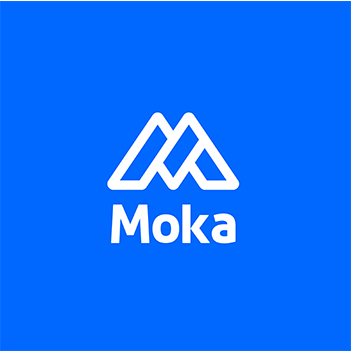How to Reduce Time-to-Hire While Ensuring Candidate Quality

Hiring faster doesn’t mean compromising on quality. Learning how to reduce time-to-hire without sacrificing quality is essential for securing top talent while saving time and money. Did you know a bad hire can cost up to 30% of their first-year earnings? Plus, 52% of candidates decline offers due to poor hiring experiences. Efficiency matters for everyone involved.
Key Takeaways
Hiring faster helps teams work better. Filling jobs quickly improves how teams perform.
Treating candidates well makes your company look good. Easy hiring steps bring in great workers and more referrals.
Having a list of candidates ready saves time. Talking to people before jobs open helps hire faster and find better workers.
Why Reducing Time-to-Hire Without Sacrificing Quality Matters
Impact on business performance and productivity
Reducing time-to-hire can significantly boost your company’s productivity. When positions stay vacant, your team’s workload increases, and overall efficiency drops. Filling roles faster ensures your team has the support they need to perform at their best. Plus, top-quality hires bring fresh ideas and energy that can elevate your entire team’s performance.
Here’s a quick look at how faster hiring impacts business outcomes:
Key Point | Explanation |
|---|---|
Productivity Amplification | Top performers enhance productivity and share best practices, benefiting overall team performance. |
Knowledge Distribution | High-quality hires become knowledge hubs, aiding colleagues and improving team efficiency. |
Retention and Stability | Quality hires lead to increased retention, preserving institutional knowledge and reducing turnover costs. |
Innovation and Adaptability | High-quality hires often lead innovation and help teams navigate industry shifts effectively. |
Customer Satisfaction | Engaged employees contribute to higher customer satisfaction, impacting revenue positively. |
Did you know that reducing hiring time by just 10% can lead to a 3% increase in productivity? That’s a small change with a big payoff.
Enhancing the candidate experience and employer brand
Your hiring process says a lot about your company. Candidates often judge how they’ll be treated as employees based on their experience during recruitment. A smooth, efficient process leaves a positive impression and strengthens your employer brand.
According to the Candidate Experience Benchmark Research, candidates who report poor experiences are less likely to apply again or refer others. This highlights the importance of maintaining quality while speeding up hiring.
Statistics back this up:
Statistic | Source |
|---|---|
95% of candidates agree that the way a potential employer treats them reflects how they would be treated as an employee. | iCIMS |
78% of candidates say their overall candidate experience indicates how a company values employees. | Career Builder |
Companies with a strong employer brand can reduce their cost per hire by 43%. | Glassdoor |
By focusing on both speed and quality, you can attract top talent and build a reputation as a great place to work.
Avoiding the loss of top candidates to competitors
Top candidates don’t stay on the market for long. If your hiring process drags on, you risk losing them to competitors. This can be costly—not just financially but also in terms of lost opportunities.
Statistic | Description |
|---|---|
Cost of Replacement | The cost to replace a highly-trained employee can exceed 200% of their annual salary. |
Turnover Costs | Estimates indicate that the cost of replacing highly-trained employees and executives can easily exceed double their annual salary. |
Employee turnover also drains resources and morale. Recruiting, training, and onboarding new hires take time and money. A faster hiring process helps you secure top talent before someone else does, saving you from these challenges.
Identifying Bottlenecks in the Hiring Process

Even the best hiring strategies can hit roadblocks. Identifying these bottlenecks is the first step to speeding up your recruitment process without sacrificing quality. Let’s break down some common challenges and how they might be slowing you down.
Lengthy job approval and posting processes
Does your hiring process feel like it’s stuck in quicksand? Lengthy job approval and posting steps are often to blame. Traditional methods can be time-consuming and inefficient, leading to delays that cost you top talent.
Slow approvals increase costs and hurt productivity.
Candidates may lose interest or accept other offers during the wait.
Streamlining this step can make a big difference. Consider automating approvals or setting clear timelines for posting jobs. A faster start means a faster finish.
Inefficient screening and interview scheduling
Screening and scheduling can feel like a juggling act. Many recruiters spend hours coordinating interviews, only to face last-minute changes.
67% of recruiters spend 30 minutes to 2 hours scheduling a single interview.
60% report losing candidates before even scheduling an interview.
Using scheduling software can save you time and reduce frustration. In fact, 59% of recruiters who use these tools save 2 to 10 hours per week. That’s time you can spend connecting with candidates instead of chasing calendars.
Lack of a pre-existing talent pipeline
Starting from scratch every time you hire wastes valuable time. Without a talent pipeline, you’re always playing catch-up.
Building a pipeline means keeping a pool of qualified candidates ready to go. This proactive approach helps you fill roles faster and ensures you’re not scrambling when a position opens up. Plus, it gives you a head start on finding the perfect fit.
Delays in decision-making and offer approvals
Decision-making bottlenecks can derail even the most efficient hiring process. Slow feedback loops and hierarchical approvals often leave candidates waiting—and waiting.
Source | Evidence |
|---|---|
Breaking Down the Recruitment Process | Slow feedback loops can lead to missed opportunities as candidates may accept other offers. |
Streamline Your Hiring Process | Hierarchical decision-making can delay offer approvals, risking top talent. |
The Applicant Manager Blog | Delays in finalizing offers due to compensation negotiations can cause candidate disinterest. |
To avoid these delays, try collaborative hiring tools or set deadlines for decisions. Clear communication and faster approvals keep candidates engaged and excited to join your team.
Strategies to Reduce Time-to-Hire Without Sacrificing Quality
Leverage recruitment technology and automation
Recruitment technology can be a game-changer when it comes to speeding up your hiring process. Tools like AI-driven assessments, chatbots, and automation software streamline repetitive tasks, allowing you to focus on connecting with candidates. For example:
Company Name | Technology Used | Result |
|---|---|---|
RetailChain Inc. | Automation tools for screenings | |
HealthcarePlus | Chatbot for candidate inquiries | 30% increase in completed applications |
Tech Innovators Ltd. | AICruiter platform | 35% reduction in time-to-hire, 25% increase in candidate satisfaction |
By automating tasks like resume screening and interview scheduling, you can reduce delays and ensure a smoother experience for everyone involved.
Streamline the interview process with structured formats
Structured interviews save time and improve decision-making. They use a standardized set of questions, making it easier to evaluate candidates objectively.
A structured interviewing strategy has proven benefits for both recruiters and candidates, ensuring the right decision is made for both parties.
Here’s why structured interviews work:
They provide consistency by asking all candidates the same questions.
They reduce bias by focusing on predefined criteria.
They speed up the feedback process, helping you make quicker decisions.
This approach ensures you’re not just hiring faster but also hiring smarter.
Build and maintain a talent pipeline for proactive hiring
A talent pipeline is like having a head start in the hiring race. By engaging with potential candidates before roles open up, you can fill positions faster and with better quality hires.
A talent pipeline decreases the time needed to hire new employees by providing access to pre-screened candidates.
It enhances your employer brand, which can cut hiring costs by up to 50%.
You’ll have a pool of qualified candidates familiar with your company, improving the overall quality of hires.
Proactive hiring ensures you’re never scrambling to find the right person when a position becomes available.
Use clear and concise job descriptions to attract the right candidates
Job descriptions are your first chance to connect with candidates. Clear and concise descriptions help candidates quickly assess if they’re a good fit, saving time for both sides.
They set clear expectations, helping candidates prepare better for interviews.
They reduce turnover by ensuring candidates understand the role, leading to higher job satisfaction.
When candidates know exactly what’s expected, they’re more likely to stay, reducing costly turnover and improving retention.
Implement collaborative hiring tools for faster decision-making
Collaborative hiring tools bring your team together, making the decision-making process faster and more efficient. These tools allow multiple stakeholders to share feedback in real time, reducing delays caused by back-and-forth communication.
For example, platforms like Trello or Asana can help track candidate progress, while tools like Slack enable instant communication. Faster collaboration means you can extend offers sooner, keeping top candidates engaged and excited to join your team.
By combining these strategies, you’ll learn how to reduce time-to-hire without sacrificing quality. The result? A hiring process that’s efficient, effective, and leaves a lasting positive impression on candidates.
Ensuring Candidate Quality While Hiring Faster

Focus on skills-based hiring and assessments
Focusing on skills-based hiring ensures you’re evaluating candidates on what truly matters—their ability to perform the job. This approach confirms that candidates possess the necessary competencies while speeding up the hiring process. For example, using skill-first screening tools can help you scale recruitment efficiently and reduce bias. AI-driven platforms can even match resumes to role requirements, saving you time and improving candidate quality.
Skills-based hiring also promotes fairness. By focusing on measurable abilities, you minimize bias and create a more equitable process. Plus, it’s a win-win for everyone. Candidates feel valued for their skills, and you get hires who are better aligned with the role. Companies adopting this strategy have reported improved retention rates and higher job satisfaction among new hires.
Conduct structured interviews to reduce bias
Structured interviews are a game-changer when it comes to fairness and efficiency. By asking every candidate the same job-relevant questions, you ensure consistency and reduce bias. Using a common scoring rubric makes evaluations more objective, helping you focus on the best fit for the role.
This method also saves time. A well-structured process eliminates unnecessary back-and-forth and ensures quicker decision-making. Research shows that structured interviews significantly improve the fairness of hiring decisions, making them a proven way to enhance candidate quality while hiring faster.
Use data-driven recruitment metrics to evaluate candidates
Data-driven metrics take the guesswork out of hiring. By analyzing key indicators like time-to-hire, quality of hire, and offer acceptance rates, you can refine your recruitment strategies. For instance, tracking the effectiveness of sourcing channels helps you focus on those that yield the best candidates, optimizing your efforts.
Metrics also highlight areas for improvement. A low offer acceptance rate might signal issues with compensation or branding, while diversity metrics can help you foster inclusivity. Using data ensures you’re making informed decisions, leading to better hires and a more efficient process.
Metric | Definition | Importance |
|---|---|---|
Time-to-Hire | Total time from job requisition to offer acceptance. | Reflects recruitment efficiency; long times can lead to losing top candidates. |
Quality of Hire | Measurement of new employee performance and retention. | Evaluates how well new hires perform, aiding in refining recruitment strategies. |
Candidate Source Effectiveness | Analysis of sourcing channels yielding the best candidates. | Helps focus recruitment efforts on effective channels, optimizing resources. |
Align hiring criteria with company culture and role requirements
Hiring for skills is essential, but aligning candidates with your company culture ensures long-term success. A strong cultural fit leads to better collaboration, higher engagement, and improved retention. Did you know that 46% of job seekers consider company culture a key factor in their job choices? That’s why it’s crucial to define your company’s values and integrate them into your hiring criteria.
When candidates align with your culture, they’re more likely to thrive and contribute positively to your team. This alignment also reduces turnover, saving you time and resources in the long run. By focusing on both skills and cultural fit, you’ll build a team that’s not only capable but also cohesive.
Reducing time-to-hire while maintaining candidate quality gives you a competitive edge in today’s fast-paced job market. A lengthy hiring process risks losing top talent, while rushed decisions can lead to costly mismatches. By addressing bottlenecks, leveraging tools like collaborative hiring platforms, and building a talent pipeline, you can hire faster without compromising standards.
Start small. Test manageable changes, like using structured interviews or automating repetitive tasks. Incremental improvements often lead to big wins. For example, companies that implemented assessment-driven screening saw a 30% reduction in hiring time. These small steps can transform your hiring process into a future-proof strategy.
Remember, a streamlined process not only saves time but also enhances your employer brand, attracting top talent and ensuring long-term success.
FAQ
What is the ideal time-to-hire for most companies?
The ideal time-to-hire varies by industry, but aiming for 30-45 days ensures you stay competitive and avoid losing top candidates. ⏳
How can I reduce hiring delays caused by decision-making?
Use collaborative tools like Trello or Slack. They speed up feedback sharing and help your team make quicker decisions.
Does automating recruitment affect candidate quality?
Not at all! Automation handles repetitive tasks, letting you focus on evaluating candidates’ skills and fit. It’s a win-win for speed and quality. 🚀
See Also
Streamline Your Hiring Process with These 10 Tips
Enhance Your Recruitment Process Using MokaHR's Talent Solutions
Enhancing Candidate Experience Through AI Recruitment Tools
From recruiting candidates to onboarding new team members, MokaHR gives your company everything you need to be great at hiring.
Subscribe for more information

